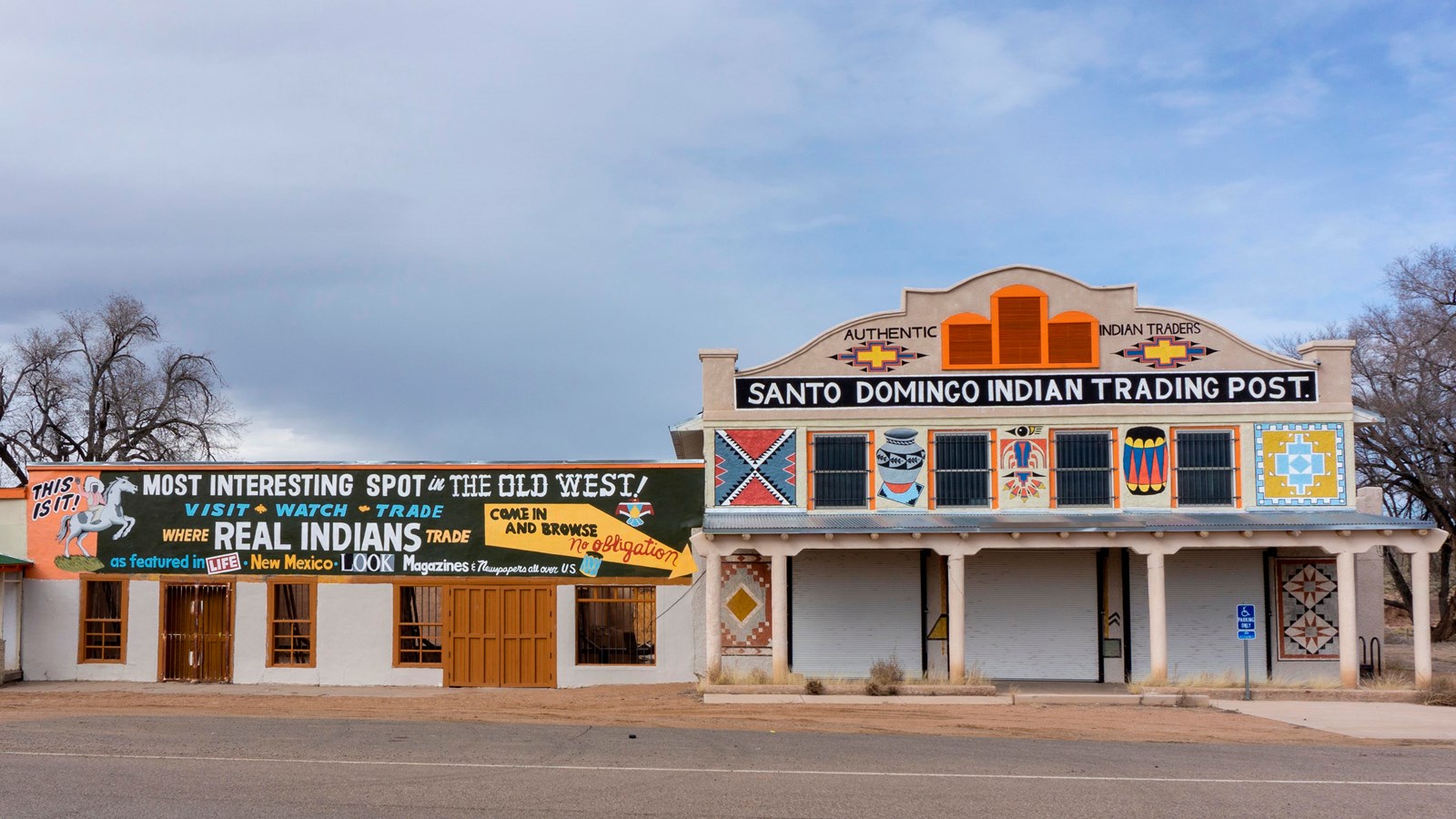Last updated: June 6, 2022
Place
New Mexico: Santo Domingo Trading Post

Photo courtesy of Rhys Martin
Route 66 aficionados may well know the name of Seligman from the town in Arizona that shares the name. They may not know, however, the origin of the name. The Seligmans were in fact well-known regional traders in the Southwest even before the era of Route 66, and in 1922 they constructed an adobe trading post in the town of Domingo, adjacent to the Santa Fe Railroad and a small highway that four years later would become a short-lived alignment of Route 66. The two-story building, which features a curved parapet in the Mission Revival style, was constructed just to the north of an older trading post that dates to 1880; the new owners used this older structure as a warehouse. A small stucco residence with a narrow porch sits to the south of the 1880 building.
The Santo Domingo Trading Post, nearly destroyed by fire in 2001, has recently undergone more than a million dollars’ worth of renovation. National Park Service grants through the Route 66 Corridor Preservation Program helped provide emergency stabilization measures in 2007, and a 2013 grant has helped to restore the historic facade painting. The front half of the interior of the 1922 building has been completely restored, including the replacement of damaged adobes, new wood flooring, new timber balconies and support posts, new glazing, wiring, plumbing, insulation, and more.
Because of the fire and the resulting collapse of much of the 1880 warehouse, much of the colorful painted sign proclaiming the Trading Post as “The Most Interesting Spot in the Old West…Where Real Indians Trade” has been lost. The message of the sign reflects stereotyping and commodification of tribal culture that was common at roadside trading posts and curio shops during the early 20th century.
While the sign slogan was intended to attract tourists, the trading post also served as an important source of foodstuffs and finished goods for neighboring tribal residents of the Santo Domingo, or Kewa, Pueblo. While highway tourism brought significant revenue to the post, the re-routing of Route 66 to the east in 1932 reduced traffic, making trade with tribal residents critical to the business’s survival.
Survive it did; the trading post operated continuously from its initial construction up until 1995, when Fred Thompson, who had owned it since 1946, passed away. Commonly featured on postcards and in guidebooks, as well as a Life Magazine article in 1943, the trading post, which also served as a gas station for many years, was a well-known stopping point.
President John F. Kennedy purportedly visited in 1962. Today the Pueblo of Santo Domingo controls the property, which was added to the National Register of Historic Places in 1998. The bulk of the restoration has been funded by grants from the Economic Development Administration with the intention that the site will continue to be developed for job creation and economic development.
The Santo Domingo Trading Post sits at the juncture of Indian Service Routes 88 and 841, off NM 22, exit 259 on Interstate 25, about halfway between Santa Fe and Albuquerque, NM. It is adjacent to the Kewa station of New Mexico’s Rail Runner, a light rail system easily accessible from Santa Fe or Albuquerque. The building is currently closed to the public. Photographing the building is permissible, but please do not take photos of other buildings, landscape, or individuals on Pueblo land without permission.
See the Santo Domingo Trading Post National Register nomination form.
